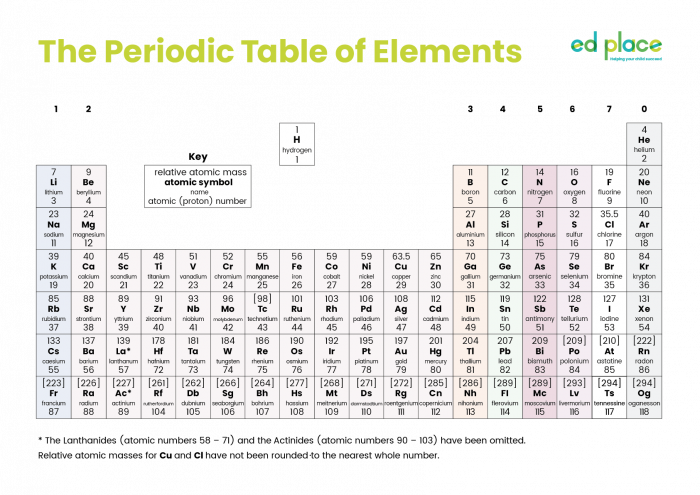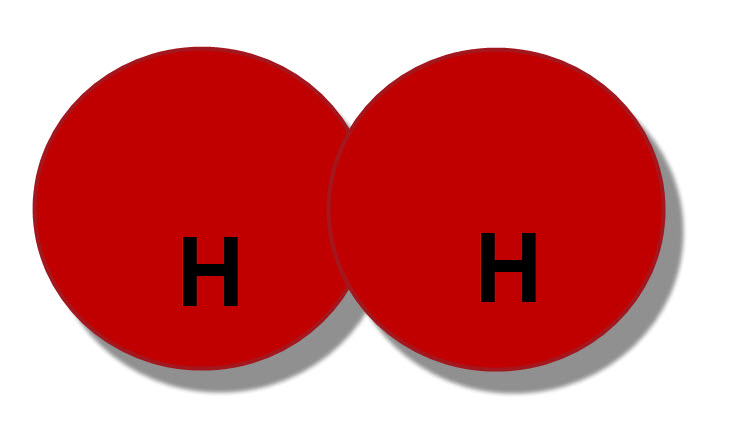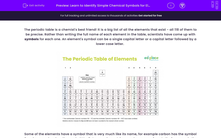The periodic table is a chemist's best friend! It is a big list of all the elements that exist - all 118 of them to be precise. Rather than writing the full name of each element in the table, scientists have come up with symbols for each one. An element's symbol can be a single capital letter or a capital letter followed by a lower case letter.

Some of the elements have a symbol that is very much like its name, for example carbon has the symbol C and magnesium has the symbol Mg. But some elements' names have come from Latin, for example the Latin name for gold is aurum. So the symbol for gold is Au.
It's important to remember that the first letter of an element's symbol must be a capital letter. If the symbol has two letters, then the second one will be lower case.
Many non-metal elements are made of molecules, for example chlorine and oxygen. There are often two atoms of the element in each molecule. The chemical formula for the molecules gives us lots of information.
Hydrogen has the formula H2. This means that a molecule of hydrogen contains two atoms of hydrogen joined together.

The little number two is key here. If it was a number three, then it would mean there are three atoms in the molecule.
And that's it! Come on, let's give some questions a try.....








